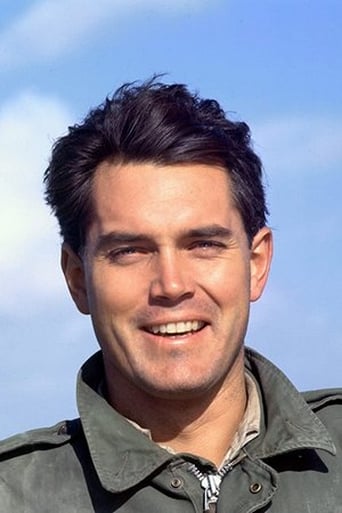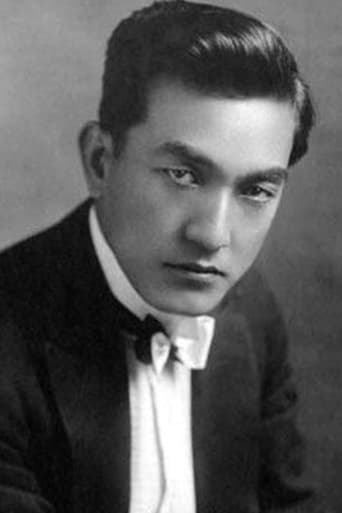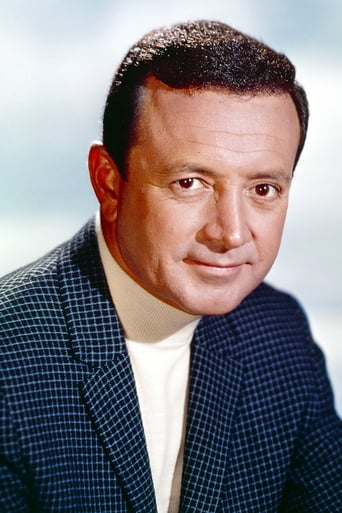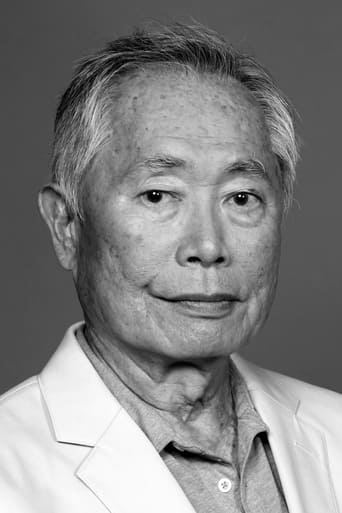Kidskycom
It's funny watching the elements come together in this complicated scam. On one hand, the set-up isn't quite as complex as it seems, but there's an easy sense of fun in every exchange.
Voxitype
Good films always raise compelling questions, whether the format is fiction or documentary fact.
DKosty123
When I saw a review of this one saying this is an "important true story" I could not believe my eyes. Anyone who has read historic accounts of Saipan would be aware there was no mass surrender of any Japanese Army on Saipan, which makes the entire battle sequence of this movie false. This is by far the best example of historic revision ever put to the American Public as even the tanks shown are not correct. Here is the real ending of Saipan - "In the end, almost the entire garrison of Japanese troops on the island — at least 30,000 — died. For the Americans, the victory was the most costly to date in the Pacific War: out of 71,000 who landed, 2,949 were killed and 10,464 wounded. Future Hollywood actor Lee Marvin was among the many Americans wounded. He was serving with "I" Company, 24th Marine Regiment, when he was shot in the buttocks by Japanese machine gun fire during the assault on Mount Tapochau. He was awarded the Purple Heart and was given a medical discharge with the rank of Private First Class in 1945."The only piece of truth in the battle part is that there were a large number of Japanese civilians on the Island and yes a bunch of them did commit suicide. Allied Artists did do an incredible job making the battle sequences look real, but this script on what happened on the island is just plain false. So the second half of the film is a flim-flam.As for the first half, I enjoy the acting by a very talented cast. Jeffrey Hunter, David Jansen, George Takai are all great and get plenty of solid support. The film starts with the kids being young and in a school yard fight. Then it brings the appeal of an American boy who is an orphan to live into a Japanese household in the 1930's. By the time the war starts, he has grown up with his new parents.The story as told does not exactly state whether the boy (Guy Gabaldon) is legally adopted by the family or not and I think back in that era that perhaps they would not have had to do that? It does pull in the viewer with Guy's relationship with his new family after his mom dies (we never meet his mom on screen as she is in the hospital ill when we first meet Guy).George Takei is 23 years young and this is his 9th role of a fine career in support as George Une. He is an older brother to Guy. The script can be admired for creating what would have been an extremely rare family situation for the 1930's, and early 1940's but it is quite easy to take apart.This is a film that addresses the issue of the internment camps and the race relations during this time period. It does not do it properly. The brief scene of the camp here gives little indication of how conditions really were in the real camps. It appears because of film length (over 2 hours) and limited budget (Allied Artists) that any real addressing of this could not be done. In a way, the worst scene in the film is the party where we have Americans and Japanese mingling in a social setting. Some of the uncomfortable issues of this are brought up but the reality of the party itself is not really addressed very well. Then the film lurches suddenly from the party into the island battle.Screen Legend Sessue Hayakawa plays Gen. Matsui late in the film who Guy convinces to surrender his whole army though in dramatic form com mitts suicide after telling his troops to surrender. . The role here obviously a short dramatic one which he does well, but the way it is scripted does not give him the opportunity to show case his talent anywhere near what he did in Bridge Over The River Kwai 3 years earlier. This film is a showcase for Hunter's considerable talent. Unfortunately, the script is so fictional and the errors throughout the film so messed up that anyone with knowledge of the real events or even those who might pick up an accurate history book, should know this film just comes off as Hollywoodized. I do wish that race relations were this advanced in the era the film uses. The reality is that they were not, this is a wishful thinking script that does a major tragedy to a very talented cast. My rating here is because of the script. It is very much worth watching for the talent of the cast. It is so easy to love mama-San and wish this was a true story.
tcroldan
Gabaldon was born and raised in Boyle Heights and attended Roosevelt High School with my brother-in-law Edwardo. He was not rejected by the Marines because of his ethnicity (Mexican-American) but because at 5'4" tall he did not meet Marine standards. It should be noted that the Marines were not adverse to recruiting in predominately Chicano communities. Guy was not "raised" by a Japanese family, but he did spend a couple of his teen year's with a Japanese family where he learned some basic Japanese. He was far from fluent in Japanese. However, the Marine Corps recruited him because they believed his knowledge of Japanese would be useful. The movie went to great lengths to hide Guy's true ethnicity. First, he was portrayed by Jeffrey Hunter, whose most notable role was playing 6'tall, blond blue eyed Jesus Christ. Guy described himself as "swarthy." In addition, there is a scene where the mamasan, in order to distinguish him from her Japanese grandchildren, refers to Guy as her "All American son." I once saw the movie on the History Channel. After the movie there was a panel discussion by historians. The final obligatory question was why the movie never mentioned that Guy was Mexican-American. The historian briefly answered that the movie was focused on the treatment of Japanese Americans during WW II and that Guy's ethnicity would have distracted from that. REALLY! Seems to me it would have made the story even more interesting. Typical Hollywood. Part of selling a movie means you have to make a white guy the central character and hero. More Hollywood is the David Jansen part and the party in Hawaii.
TankGuy
I got quite a surprise when i watched hell to eternity,it's not like all the other war films made by Hollywood,it's much darker and grittier than any other war film of it's time,however it is a brilliant movie and it depicts really well how horrifying and terrible war really is.But it's also a biopic which tells the story of war hero Guy Gaboldon,a young Japanese American man who's interpreting skills were used excellently during the pacific campaign of world war 2.The story goes like this,in Los Angeles during the great depression,young Japanese American boy Guy Gaboldon is bullied because of what he is,he gets into a fight with another boy at school for stealing food,the fight is broken up by one of the teachers,who also happens to be a Japanese American,the teacher takes Guy home only to find that Guys father has left and his mother is dying.He lets Guy live with him and his family and Guy becomes much happier and is able to teach his Japanese parents English,for the next few years of his life he grows up with his new family,but just as things are going so well,the Japanese attack pearl harbour and all the Japanese Americans including Guy's family are moved into detention camps,a saddened Guy is drafted into the army but is rejected because of a damaged eardrum,but he re-enlists and is finally accepted,he completes his training and lands on the island of Saipan where he uses his interpretation skills to persuade thousands of Japanese soldiers to surrender,making him a hero.The acting is fantastic,Jeffrey Hunter is great as Guy but he definitely does not look Japanese,David Jansen is excellent as his drill sergeant Bill Hazen and Vic Damone is great as one of Guy's fellow marines.His performance is the best as he plays his character with wit and charm,check out the way he clicks his thumbs and rubs his hands together whilst hopelessly trying to chat up women.The are a few brilliant battle scenes too but i have to warn you,they are a lot more realistic and violent than that of other war films,the battle of Saipan is brilliantly depicted as real battle footage is mixed in with special effects and dozens of well choreographed extras running up the beach and engaging in combat with the enemy.The bloody skirmish between the Japanese and the Americans is also fantastically done,look at how both sides stab each other and beat each other with their rifles,the battle in which Bill Hazen is pinned down under heavy machine gun fire and the marines come to rescue him is also great.But the film is probably best at bringing home at first hand the horrors of war,there is quite a disturbing scene in which Bill Hazen throws a Grenade into a machine gun emplacement and accidentally injures a little girl who was hiding close behind,but the most harrowing scene for me was when the woman and her son commit suicide because they think the Americans will torture them and in them Guys sees his mother and brother but is unable to stop them jumping to their deaths.This isn't really a film for the faint hearted.However,all that being said there are some funny scenes,like when Gaboldon,Hazen and Damone con Whisky off an unsuspecting taxi driver and then proceed to get drunk and party with some women in an apartment room,Jansen does an excellent drunken impression,i think it's the best i've ever seen and some of the things he says and does are just priceless.Overall one of my favourite war films,great acting,excellent action scenes and brutal anti-war theme,this is definitely one that must be released onto DVD,if you ever seen it on TV don't miss it.
Robert J. Maxwell
Jeffrey Hunter is Guy Gabaldon, a real person, in this "based on a true story" film. Gabaldon was an orphan in the Great Depression, adopted as a child into a Japanese family in California. He comes to love his adoptive family, learns to speak Japanese, and values Japanese customs.Then -- Pearl Harbor. His brothers enlist in the Army and are sent to Italy to be part of the highly decorated 442nd. Hunter enlists, with Mama-san's permission, in the Marine Corps as a translator. The movie demonstrates, without making the point overtly, that in the Marines, everyone is a rifleman first, and a cook, a clerk, or a translator second.After a long stop in Honolulu, Hunter finds himself in combat on Saipan where two of his buddies (David Janssen and Vic Damone) are killed by the Japanese. Thereafter he turns into a one-man firing squad -- blowing everybody and everything up, or shooting them indiscriminately.Saipan was a Japanese home territory, not a conquered island. The civilian population had been told that there would be no surrender on the part of anybody, and that captives would be tortured and then killed. This led to some famous footage of Japanese civilians throwing their babies off cliffs and then jumping down to join the heap of bodies on the rocky ocean shore. One of the civilians reminds Hunter of his Mama-san and brings him to his senses, so that he's able to use his skills to negotiate surrenders and save untold lives.Good story. Crummy screenplay, acting, and directing. Nobody gives a particularly good performance. When the direction isn't simply functional it seems almost insanely unbalanced. Phil Karlson, who has done some good nasty work elsewhere, is to directing what Grandma Moses is to painting. And the writing should have been shelved until something half-way decent came along. I'll give one example to illustrate the point. The Japanese general, Sesue Hayakawa, has ordered an all-out, self-sacrificial attack on the Americans. As the men and civilians assemble, Hunter captures Hayakawa and orders him at gunpoint to address this rag-tag army and call off the suicidal charge. Hunter and Hayakawa argue before an anguished Hayakawa complies, telling Hunter, "This is not an easy thing to see." Hunter replies bitterly, "Neither was Pearl Harbor." Hunter's line is right out of a World War II flag waver. He's familiar with Japanese customs and the concept of honor. A more appropriate response would have been a compassionate, "I know." Mama-san and Papa-san are sent to an isolated detention camp along with other Japanese families. It's hardly commented on, though everyone looks a little sad. Hunter seems to forget about them for a long time after their forced move, and we see nothing of the camp itself, just a brief, corny meeting between Mama-san and Hunter. A disgraceful chapter in American history, and it's taken for granted as a matter-of-fact part of war-time life. Angry at a savage attack against our forces at Pearl Harbor, the US, led by Earl Warren, took their rage out on a population that was innocent but readily available. The Japanese detainees later received reparations but as a nation we seemed to have learned nothing from the experience, given that we displaced our aggression all over again a few years ago.Well, that's an ethical issue which I won't bother with further. Getting back to the movie, there is a loooooooong middle section that takes place in a hot apartment in Honolulu with some girls around for recreational purposes. Our boys (except Hunter) get wildly drunk, as boys are want to do, and everyone dances around to discordant 1960s jazz -- not 1940s pop tunes or Hawaiian music. It goes on pointlessly for about twenty minutes of screen time that might have been spent valuably getting a little bit into Hunter's conflicted head. But, no. If there's any reason for the inclusion of this lengthy scene, it's only to give Patricia Owens (a beautiful woman with pale skin and anthracite irises) a chance to get drunk and do an incomplete strip tease. Maybe it gave David Janssen and Vic Damone a chance to endear themselves to the audience too. If that was one of its goals, it failed.Well, it's not worth carrying on about. I saw this many years ago and was positively impressed with it. Must have been very young, because now that I know a little more about human nature I found it a little banal.






